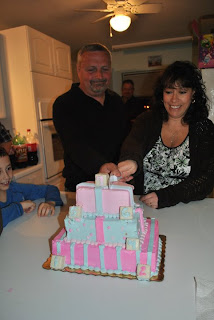I'm very thankful that my older daughter has a gift for creatively expressing herself. Gabrielle's idea for a Tapestry of Grace, Year 2, Unit 2 project was wonderful. She chose to learn about hairstyles of the period. I'm very proud of her and would like to share her work.
Hoping you're blessed with a zest for life,
~tambrie
The Fashion-Conscious Queen
The late 16th century is called the Elizabethan Era because Queen Elizabeth I reigned. Her clothes evolved into bigger and more lavish dresses. Ruffs were popular in the mid century. Large ruffled collars were worn by the wealthy, mainly in Spain and France, but their popularity spread to England. Elizabethan clothes reflected a person's wealth and social status. There were actually laws that regulated the colors and kinds of clothes that certain people could wear.
 Queen Elizabeth was well-educated and a follower of fashion. While she may have worn the same casual gown for three days at a time while inside, when she went out in public, she dressed to impress. Her clothing and jewels made a statement about her power and the strength of her nation. Also, when she went out, none of the ladies were to rival her appearance.
Queen Elizabeth was well-educated and a follower of fashion. While she may have worn the same casual gown for three days at a time while inside, when she went out in public, she dressed to impress. Her clothing and jewels made a statement about her power and the strength of her nation. Also, when she went out, none of the ladies were to rival her appearance.Several portraits show Queen Elizabeth with a feather fan. During the Sixteenth century, fans were a clothing accessory and only the wealthy could afford them. Some were even adorned with jewels.
The other hairstyle that was worn during the time period was the Frizzed hairstyle. Shorter hair was curled in the front and teased to have a frizzed look. The back of the hair was secured in a bun.
The ladies of England padded, curled and dyed their hair. Flame red hair was the most popular color during the Elizabethan period. Many ladies used wigs because the dyes used to color hair were poisonous.
The ladies of the Elizabethan court would have worn their hair uncovered when they attended parties or balls. However, when a lady went outside, a head covering, called a coif, was worn by all ladies. The fabrics used to make the coifs was dependent on the lady’s social status. White or off-white linen may have been used by peasants, while nobility would have had their coifs made of silk and made with an embroidered design.
My Project
The ladies of England padded, curled and dyed their hair. Flame red hair was the most popular color during the Elizabethan period. Many ladies used wigs because the dyes used to color hair were poisonous.
The ladies of the Elizabethan court would have worn their hair uncovered when they attended parties or balls. However, when a lady went outside, a head covering, called a coif, was worn by all ladies. The fabrics used to make the coifs was dependent on the lady’s social status. White or off-white linen may have been used by peasants, while nobility would have had their coifs made of silk and made with an embroidered design.
My Project
For my project, I got two head forms and painted them. I added hair to the head forms with hot glue and then styled them in the period hairstyles.
For my Queen Elizabeth I head form, I used the Padded hairstyle by using cotton balls as my “rats.” The crown is cut from foam and I also used felt and jewels. I created an Elizabethan ruff collar by gluing and folding adding machine tape with doilies.
For my peasant head form, after painting and adding the hair, I wet and curled the hair and let it dry. Then, the next morning, I teased the hair to make the Frizzed style. I used a cotton fabric to make the coif. I cut the fabric using a pattern I found online and then hand-stitched the seams. I added a lace edge to the front of the coif.
I made the feather fan out of feathers, a dowel and decorative items. I painted the wood a gold color and glued the feather and the design together.
I really enjoyed learning about hairstyles and accessories during the Elizabethan period.
For my Queen Elizabeth I head form, I used the Padded hairstyle by using cotton balls as my “rats.” The crown is cut from foam and I also used felt and jewels. I created an Elizabethan ruff collar by gluing and folding adding machine tape with doilies.
For my peasant head form, after painting and adding the hair, I wet and curled the hair and let it dry. Then, the next morning, I teased the hair to make the Frizzed style. I used a cotton fabric to make the coif. I cut the fabric using a pattern I found online and then hand-stitched the seams. I added a lace edge to the front of the coif.
I made the feather fan out of feathers, a dowel and decorative items. I painted the wood a gold color and glued the feather and the design together.
I really enjoyed learning about hairstyles and accessories during the Elizabethan period.
















